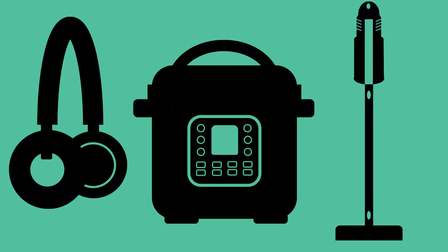How to Wipe a Computer Clean of Personal Data
Before selling, donating, or recycling your outdated laptop or desktop, protect your privacy with this important step

Looking for a new home for an old laptop or desktop computer? Before you part ways with it, make sure the next owner can’t access your personal files, photos, or financial info.
The simplest way to do that is with a factory reset, which wipes your data from the hard drive and returns the computer to its original settings. With a Chromebook, a Mac, or a Windows PC, it takes only a few minutes.
Apple Users
Resetting a Mac is simple, especially if you’re using one of Apple’s M-series models that debuted in 2020. These Macs, powered by Apple silicon chips like the M1, M2, M3, and new M4, have entirely replaced Intel-based models in the company’s lineup. If you’re not sure which one you have, click the Apple menu in the top left corner of the screen, then select “About This Mac.” Your processor type will be listed at the top of the window.
Before you begin, make sure you’re signed out of iCloud. You can do that in the Apple Account (formerly known as Apple ID) section of System Settings. Signing out ensures the next owner won’t run into activation lock issues when setting up the device.
To reset an M-series Mac, start by shutting it down completely. Then turn it back on while holding down the power button. Keep holding it until a screen appears with the options to select a startup disk or access settings. Click the Options icon, then click Continue. If prompted, enter your password.
From the next screen, open Disk Utility, select your main drive (usually called “Macintosh HD”), and click Erase. For format, choose APFS, and rename the drive “Macintosh HD” (or leave the name unchanged). Then click “Erase Volume Group.” Once that’s done, follow the prompts to erase the Mac and restart it. The computer will reboot and begin the macOS setup process.
If you’re selling or giving the Mac away, you can press Command-Q during the setup screen to shut the machine down and let the new owner complete setup themselves.
If you’re using an older Intel-based Mac, the process is similar. You’ll restart the computer while holding Command and R to enter macOS Recovery. From there, you’ll access Disk Utility, erase the drive (using the Mac OS Extended format), then return to the main menu and choose “Reinstall macOS.” When the reinstall finishes, the Mac will start the setup process just as it did when it was new.
Windows Users
Resetting a Windows PC is also pretty easy, though the steps vary slightly depending on which version of the operating system you’re using.
If your computer runs Windows 11, click the Start button and open Settings. From there, select System, then Recovery, and click Reset this PC. You’ll be guided through a few onscreen prompts to choose how you want to reset the system—either by keeping your files or removing everything.
On Windows 10, open the Start Menu and click Settings, then go to Update & Security and select Recovery from the sidebar. Under “Reset this PC,” click “Get started,” and follow the prompts to fully wipe the device and reinstall the operating system.
In both versions, Windows gives you the option to keep your personal files or remove everything. If you’re preparing the PC for sale or donation, you’ll want to choose the full reset to ensure none of your data remains.
Once the process is complete, the computer will restart and walk through the initial setup, just as it did when it was brand new.
Chromebook Users
Chromebooks are arguably the easiest laptops to wipe clean. Because most files are stored online in Google Drive by default, there’s often little, if anything, that needs backing up before you begin.
To start, sign out of your Chromebook completely. Then press and hold Control-Alt-Shift-R, and select Restart. When the reset window appears, choose Powerwash, then click Continue.
The Chromebook will restart and erase all personal data from the device, returning it to factory settings.
If you’re planning to sell or give it away, don’t sign in again afterward as the first person to log in will become the new owner of the device.
With just a few simple steps, you can safely pass your old computer along, and feel good knowing your personal data stays private.
































